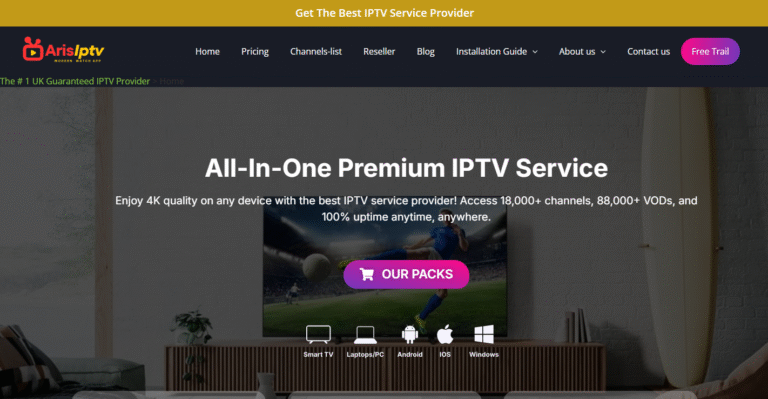In-Depth Reviews of IPTV Services
The IPTV market has experienced significant growth in recent years, offering a variety of services that cater to different viewing preferences. This section explores multiple IPTV providers, focusing on critical aspects such as performance, channel selection, pricing, user experience, and customer support.
When considering performance, it is vital to evaluate streaming quality. Leading IPTV services typically provide high-definition (HD) and even 4K content, with minimal buffering issues. Users often report better experiences with providers that utilize adaptive bitrate streaming, ensuring smooth playback even under fluctuating network conditions. The reliability of an IPTV service is often measured by the uptime percentage and the frequency of service outages, which can significantly impact the viewer’s experience.
Channel selection is another essential factor influencing user satisfaction. Different IPTV services offer varying channel lineups, including popular local and international channels. Some providers may prioritize niche content, such as sports or international programming, while others focus on mainstream offerings. A comprehensive list of available channels, complemented by on-demand content and cloud DVR options, enhances the attractiveness of a specific service.
Pricing structures among IPTV providers also vary widely. It is essential for potential customers to assess each service’s cost-effectiveness. Some providers may offer competitive monthly rates, while others may require a longer commitment or offer bundled packages. Furthermore, promotional discounts and trial offers can aid consumers in making informed decisions.
User experience is determined by interface usability and customer support quality. Services with intuitive interfaces allow for seamless navigation through vast content libraries. Additionally, responsive customer support is crucial, as users may encounter technical issues or require assistance with account management. Expert opinions and user testimonials provide valuable insights into how well different providers deliver on these fronts.
Ultimately, by examining these key aspects and gathering user experiences, viewers can make informed choices that align with their preferences and viewing habits in the expanding IPTV landscape.
Step-by-Step Tutorials for IPTV Setup and Usage
Setting up Internet Protocol Television (IPTV) can initially appear daunting for both beginners and experienced users. However, by following a detailed step-by-step approach, users can effectively utilize these services across various devices such as smart TVs, smartphones, and streaming boxes. The setup process may differ slightly based on the device, so it is crucial to understand the specific requirements for each.
To initiate the IPTV setup on a smart TV, first, ensure that the device is connected to the internet. Once connected, navigate to the app store present on your TV interface and search for a suitable IPTV application. Popular choices include Perfect Player, VLC Media Player, and Kodi. Download and install the preferred app. After installation, open the application and enter the necessary M3U playlist URL provided by your IPTV service provider. This URL acts as a content portal, allowing you access to various channels.
For smartphone users, the process is similar. Begin by downloading an IPTV app from the App Store or Google Play Store. After installation, launch the application and input the M3U playlist URL. Ensure that you grant any permissions requested by the application, which may include access to device storage, to optimize the experience.
For streaming boxes like Roku or Amazon Fire Stick, the installation also involves selecting an IPTV application from their respective app stores. Following the same steps as above, users need to input the M3U playlist URL to gain access to content. It may be beneficial to update the device’s firmware if any connectivity problems arise.
Should users encounter problems during setup or while using the IPTV service, common troubleshooting steps include rebooting the device, checking the strength of the internet connection, or ensuring that the M3U URL is correctly entered. Additionally, optimizing the IPTV experience may involve adjusting quality settings within the app or utilizing a Virtual Private Network (VPN) for enhanced privacy and access to global content.
In conclusion, by following these structured tutorials, users can efficiently set up and maximize their IPTV service, ensuring a smooth and enjoyable viewing experience with minimal interruptions.






